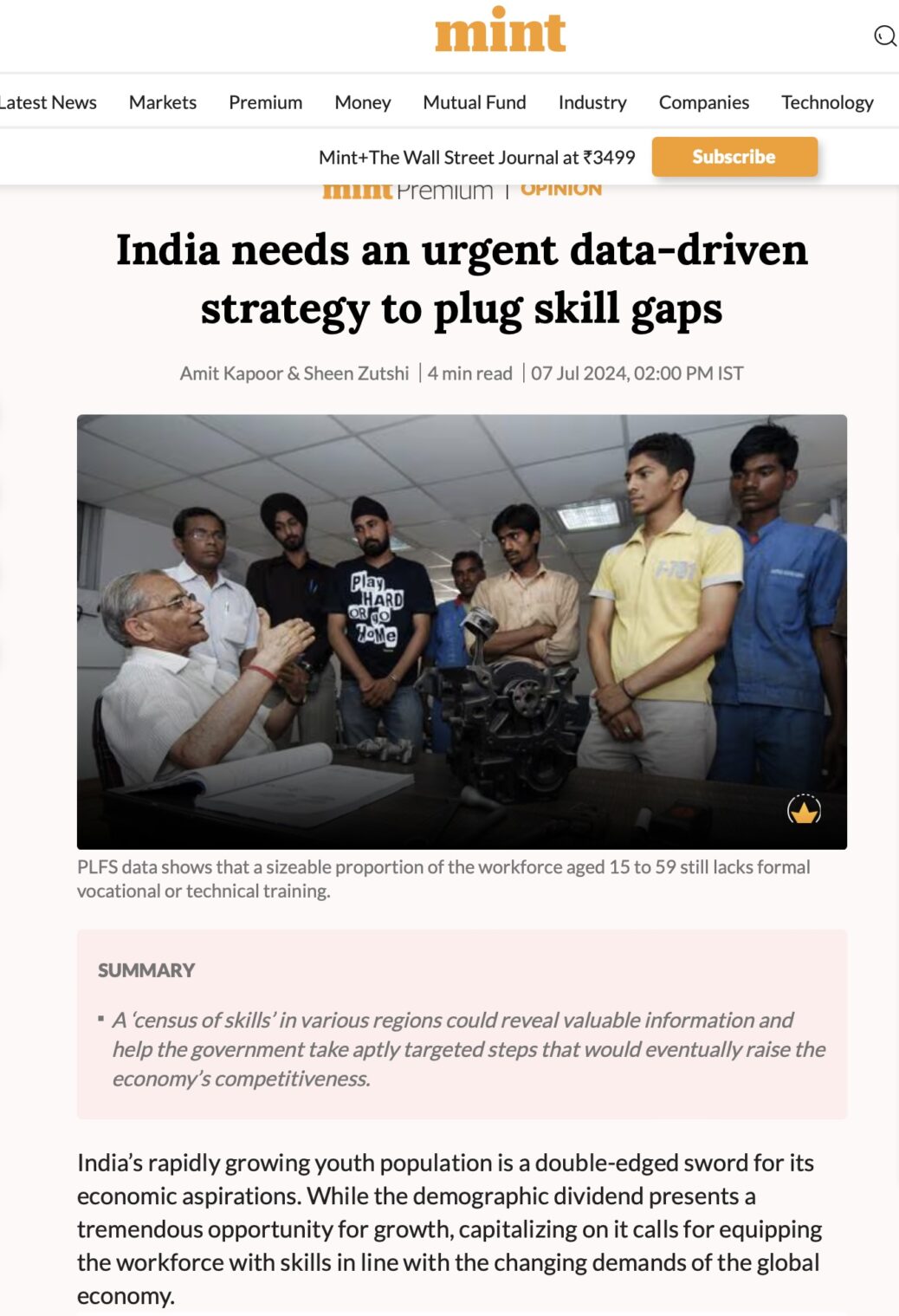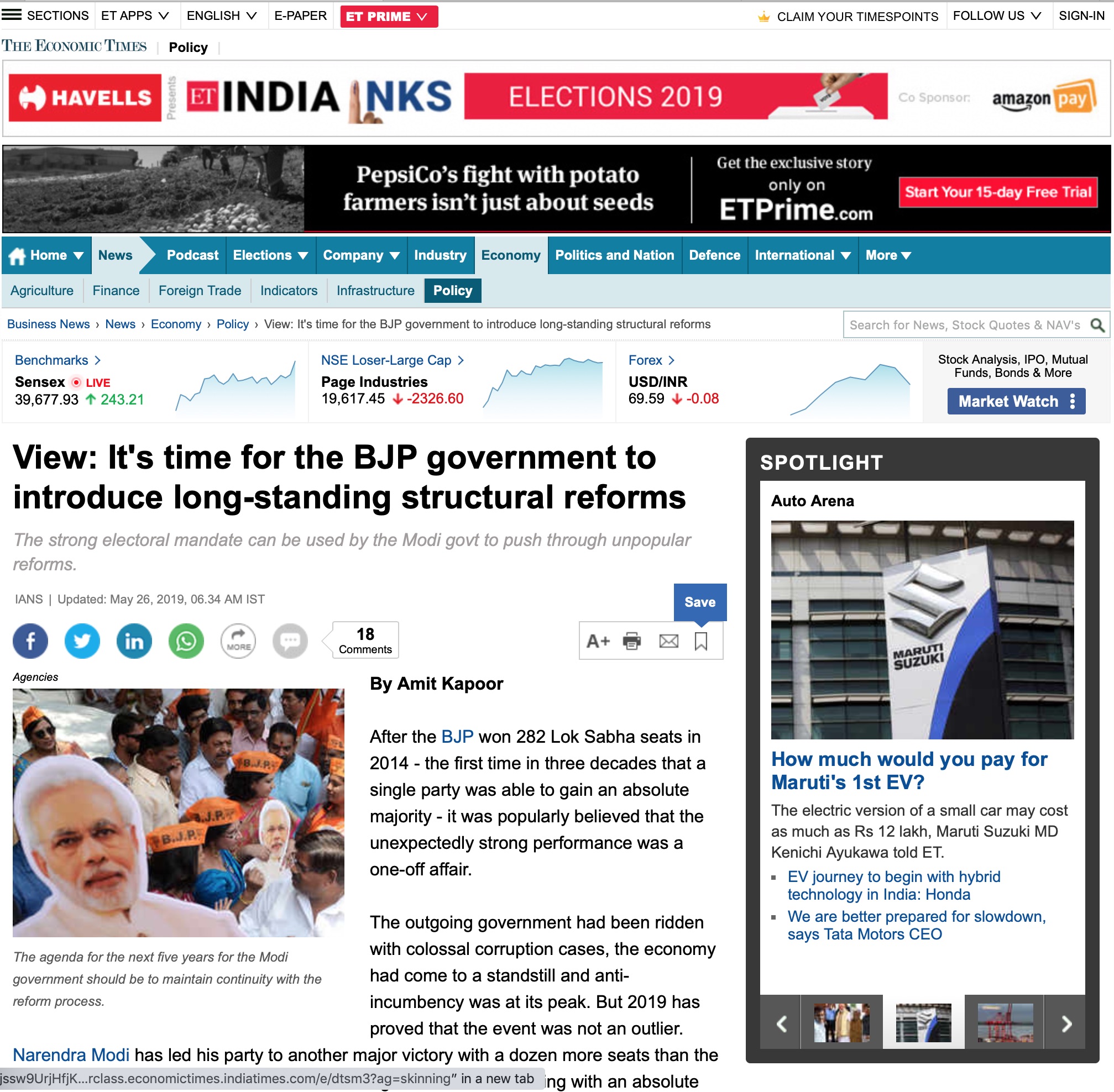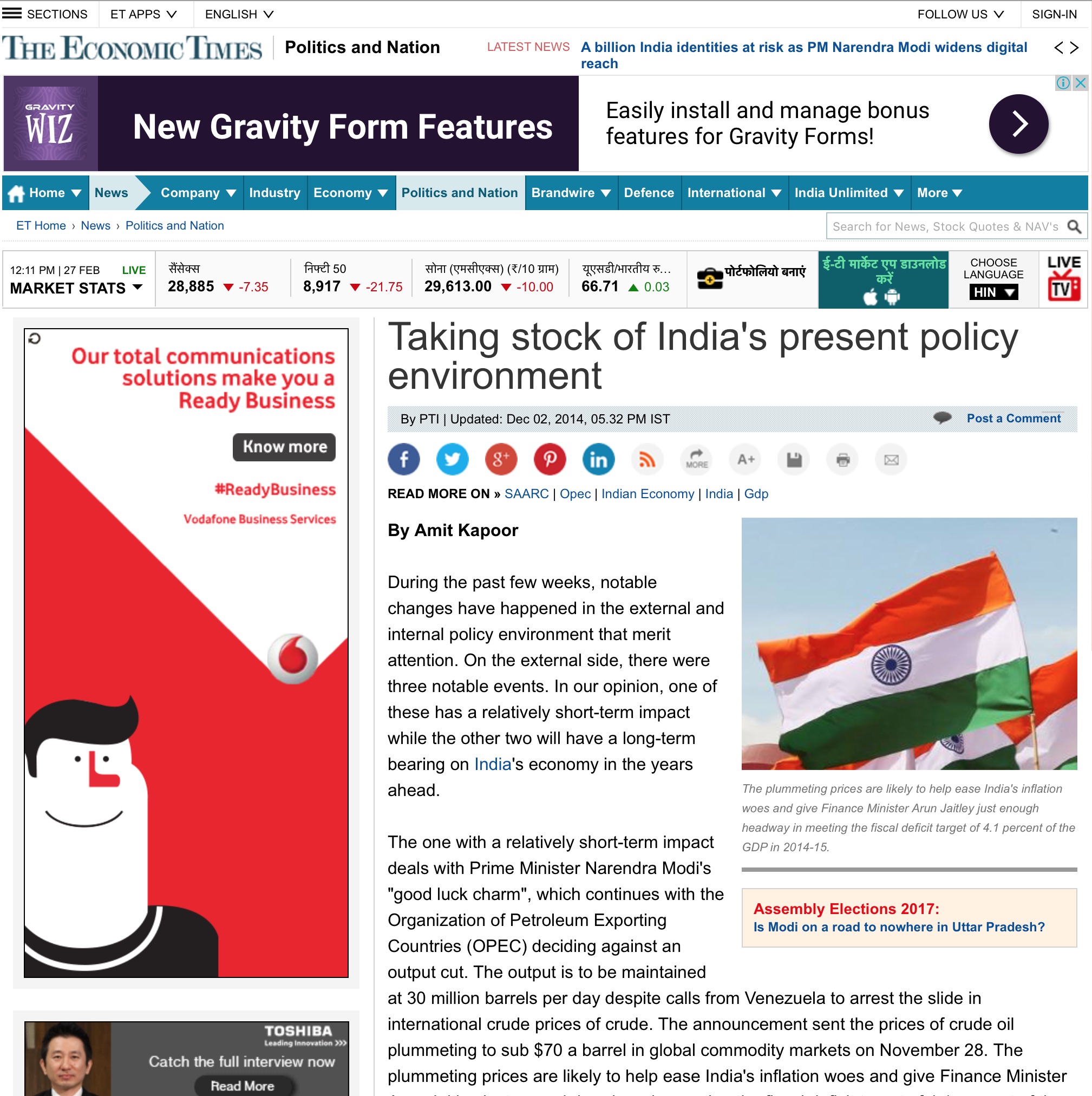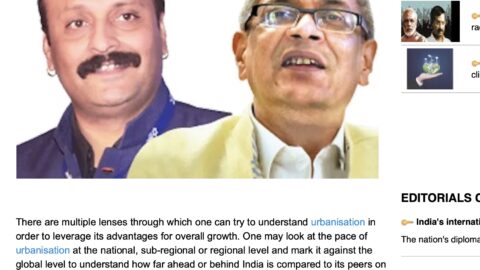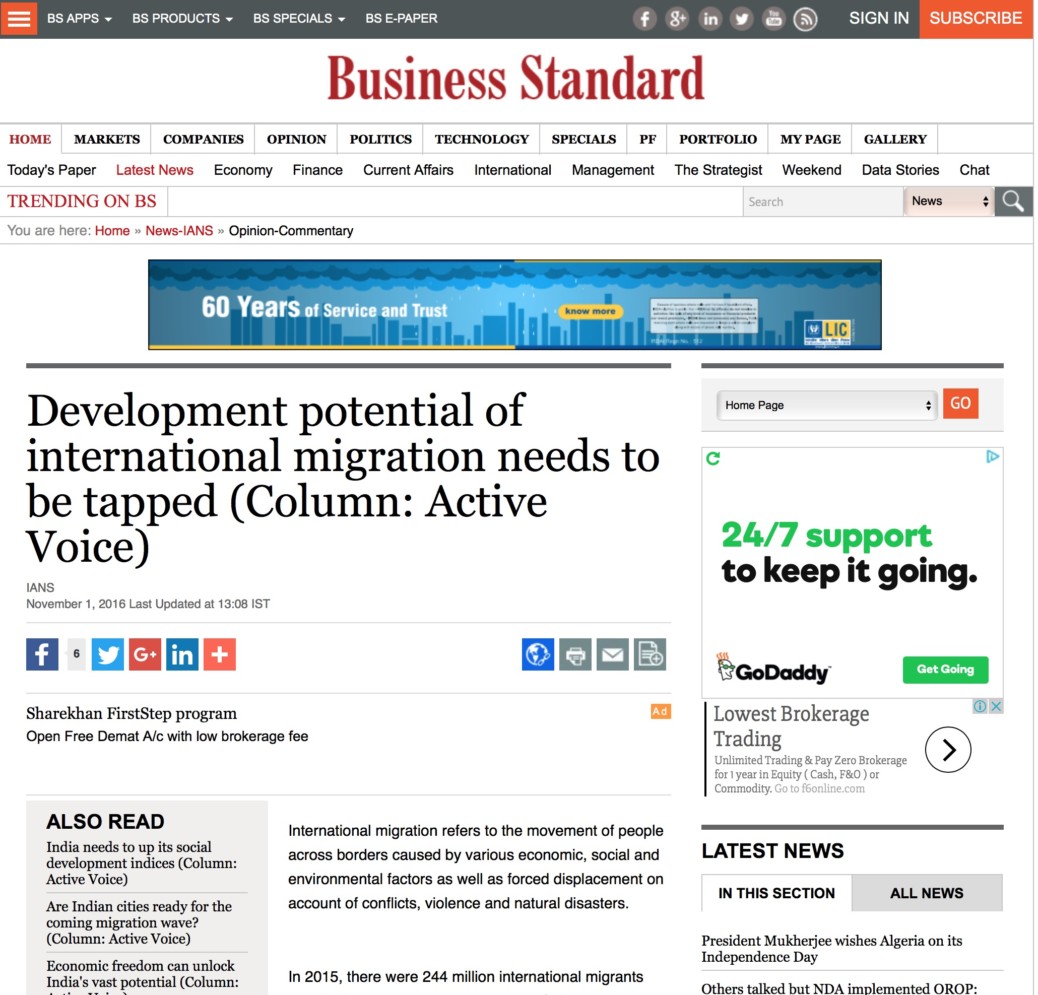By Amit Kapoor and Sheen Zutshi
Bridging the Skill Gap: Paving the Way for India’s 2047 Vision
India’s rapidly growing youth population provides a double-edged sword for its economic aspirations. While the demographic dividend presents a tremendous opportunity for growth, capitalising on it calls for equipping the workforce with skills that are in line with the changing demands of the global economy. World Bank data show a concerning trend: India’s labour mobilisation rates have fallen from over 70% in 1990 to 56% in recent years. This reduction in labour mobilisation represents an alarming weakness in the Indian economy, threatening to undermine the country’s demographic advantage. As India strives to position itself as a global economic powerhouse, its ability to transform this demographic bulge into a true dividend through targeted skill development and labour market reforms will be critical.
A skilled and educated workforce is critical for increasing productivity, fostering innovation, and attracting investment, all of which in turn contribute to enhancing national competitiveness. The analysis of Periodic Labour Force Survey (PLFS) data provides more insight into India’s changing workforce dynamics. The data show that growth rates varied across skill levels, offering important insights into the changing composition of India’s skilled workforce and its implications for the country’s overall competitiveness. The PLFS data show a disturbing trend: the declining growth rate of highly skilled individuals (Skill Levels 3 and 4). Between 2017 and 2022, the growth rate for these skill levels decreased by more than 5% in at least 22 of the 36 states and union territories. Notably, states such as Sikkim, Karnataka, Nagaland, Uttar Pradesh, West Bengal, and Goa have had a more than 10% fall in the growth rate of their highly trained workforce.
On the positive side, the semi-skilled workforce (Skill Level 2) has grown significantly, with a national CAGR of 59.47% between 2017–18 and 2022–23. More than 45% of the workforce across states falls into this category, showing a growing demand for individuals with intermediate-level abilities. The Pradhan Mantri Kaushal Vikas Yojana (PMKVY), the flagship scheme under the Skill India mission, has made a substantial contribution to this positive trend by offering skill training and certification. During the same time period, Skill Level 1, which comprises low-skilled workers, increased by 24.79%. This tendency indicates a continuous reliance on skilled labour across industries, potentially driven by construction, manufacturing, or services.
Despite progress, PLFS data also shows that a sizable proportion of the workforce aged 15 to 59 still lacks formal vocational or technical training. While the proportion has dropped from 91.9% in 2017-18 to 72.6% in 2022–23, it still indicates a major gap in formal skill development for a sizable segment of the Indian workforce. The PLFS statistics suggest that semi-skilled and low-skilled workers are likely to dominate the workforce, while the growth of high-skilled workers appears to lag behind. This tendency may have long-term implications for India’s competitiveness, demanding focused interventions.
We are also able to recognise skill intensity as a fundamental distinction between rural and urban areas in India. On average, rural regions have much lower skill intensity than their metropolitan counterparts. However, this disparity is mostly attributable to cluster composition. In India, metropolitan districts focus on skill-intensive trade clusters. Cities such as Mumbai, Bangalore, Delhi NCR, and Hyderabad have evolved as centres for IT services, financial services, and other knowledge-intensive businesses. These industries often require a higher number of skilled individuals, such as software engineers, data analysts, and financial professionals. As a result, these urban zones naturally attract and develop a more skilled workforce. In contrast, rural districts in India frequently specialise in agriculture, small-scale manufacturing, and traditional crafts. While these sectors are critical to the Indian economy, they typically demand a smaller number of highly qualified people. These businesses’ presence in rural areas helps to explain the observed lower skill intensity. Addressing this disparity necessitates not only skill development, but also the deliberate establishment of skill-intensive clusters in rural areas, which may result in more balanced economic growth across India.
The Government of India has addressed these concerns through the Skill India initiative, which resulted in the expansion of the Skill Level 2 workforce. But to meet the population’s current and future skill requirements, more coordinated efforts are required by state governments. The Chandrababu Naidu-led TDP government in Andhra Pradesh proposed initiatives like the Skill Census, which can comprehensively assess current skill levels across the state’s regions and sectors. Undertaking such activities by all states could promote competitive federalism by leveraging the detailed data collected from Skill Census exercises.
By mapping the current skill landscape, policymakers can pinpoint specific areas with shortages of skills and devise targeted actions. State governments can create and implement specialised skill-building programmes to address the demands of their unique workforces and industries. This data-driven strategy could promote healthy competition among states, resulting in improvements in skill development projects across the country. The Skill Census can help identify the exact skill sets needed to meet industry demands, both nationally and globally. By addressing the talent gap through targeted measures, India can realize the full potential of its demographic dividend.
The road ahead for India’s skill development is difficult, but the rewards are significant. By investing in human capital and utilising data-driven initiatives, India can turn its demographic advantage into a meaningful economic dividend. A skilled and productive workforce will not only drive innovation and increase productivity, but it will also significantly contribute to the overall competitiveness of the nation, ushering in India’s journey to become a developed economy by 2047.
The article was published with Mint on July 8, 2024

